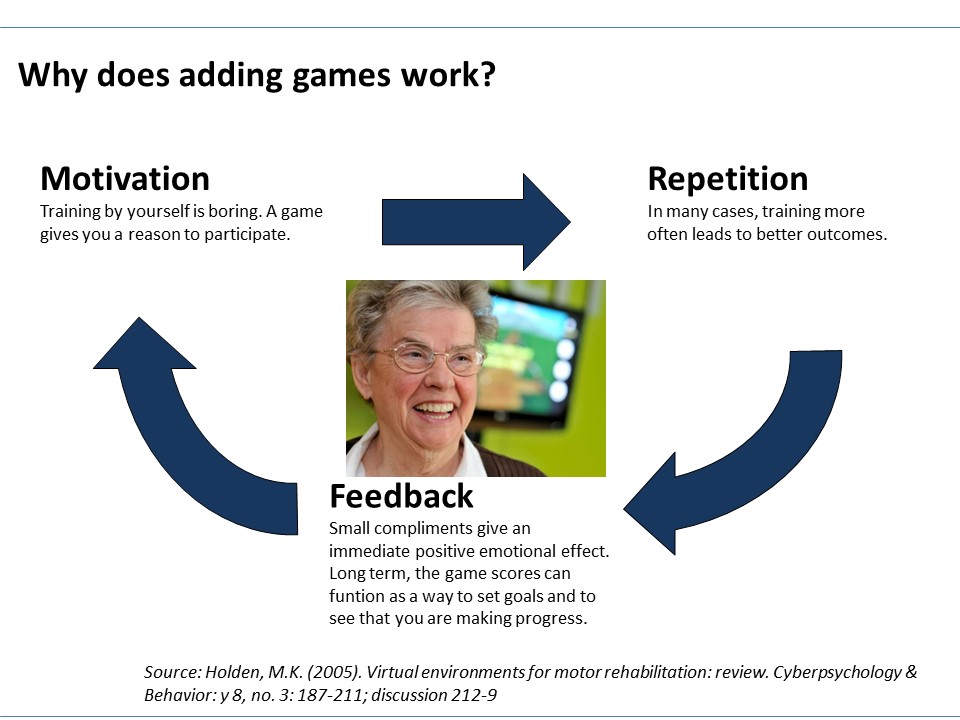Objectives of SilverFit systems

SilverFit is committed to improving the health and wellbeing of older adults by developing interactive digital exercise systems that help healthcare professionals provide engaging and fun physical and cognitive activities to their patients.
Games help keep you motivated
During the rehabilitation process, it is often difficult for the client to stay motivated to perform, and repeat, all the exercises (daily). As a result, adherence to treatment is often lower than desired by therapists. Virtual exercises can make therapy more fun. Rhodes et al (2009) showed in their study that adding video games to cycling training led to better participation in therapy. People thought it was more fun to ride bikes with video games.
Lohse et al (2013) report that certain factors in games (choice, reward, and goals) lead to increased motivation and treatment adherence. This can help the client perform the recommended amount of exercise, at the expected level. Therapies combining interactive solutions allow voluntary participation, longer playing time and a high probability of being replayed (Lohse et al., 2013).
Motivation, repetition, feedback
In 2013, a physiotherapy student, in collaboration with LUMC (University Medical Center of Leiden), conducted a research on motivation when using the SilverFit 3D. Motivation can be subdivided into intrinsic motivation, extrinsic motivation and a-motivation. Intrinsic motivation is the most important, it is the person's inner "will" to act. This leads to more self-confidence and motivation for rehabilitation. Research has shown that clients using the SilverFit 3D achieve the highest intrinsic motivation scores. In addition, research has shown that the SilverFit 3D also motivates therapists. Some of their comments about the SilverFit 3D were: “provides more motivation and pleasure during therapy”, “offers variety and variation”, “clients move more”, and “they push the limits”.
When clients are more motivated, they repeat the exercise more often. More repetitions are better for rehabilitation and health and lead to more feedback. Both in the short term (through rewards in games or getting more points) and in the long term ("I am now much more successful than when I started", or, "I can now do much more with my arm"). This feedback motivates clients to do even better or to repeat the exercise more often and so on.

Scientific literature
Click here for an overview of the scientific literature relating to SilverFit and virtual therapy.
Bibliography
Holden, M.K. (2005). Virtual environments for motor rehabilitation: review. Cyberpsychology & Behavior: The Impact of the Internet, Multimedia and Virtual Reality on Behavior and Society 8, no. 3: 187-211; discussion 212-9.
Lohse, K., Shirzad, N., Verster, A., Hodges, N. & Van der Loos, M. (2013). Video games games and rehabilitation: Using design principles to enhance engagement in physical therapy. Journal of Neurologic Physical Therapy, 37:166-175.
Rhodes, R.E., Warburton, D.E.R. & Bredin, S.S.D. (2009). Predicting the effect of interactive video bikes on exercise adherence: an efficacy trial. Psychology, Health & Medicine, 14(6), 631-640.
 Nederlands
Nederlands  English
English  Français
Français  Deutsch
Deutsch 
